Participant Details
- Community Arts Partner Name
- Andy Peterson
- Partner Type
- Individual
- Profile Photo
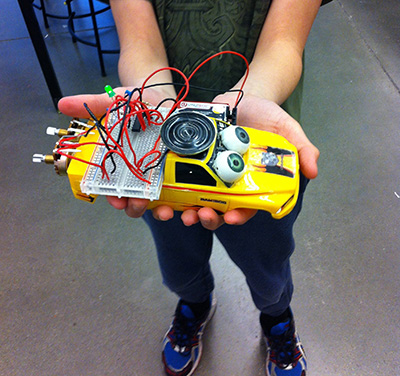
- Individual Bio or
Organizational Statement - Application PDF
As a visual artist, I have a passion for teaching and collaborating. I work to create inclusive opportunities for youth and underserved populations within contemporary art. I received my undergraduate degree in studio art from Seattle Pacific University in 2003, and an MFA from Washington State University in 2008. I have been teaching Drawing and Painting at Seattle Pacific as an adjunct professor since 2008. My professional work is interdisciplinary, including drawing, painting, machine-building, electronics, video, sound, and community-based projects. My work has been exhibited mostly on the west coast, with local venues including 911 Media Arts, University of Washington, CoCA, Seattle Pacific University, and Museum of Art/WSU. I have taught pre-K through undergraduates, but I primarily work with adolescents and college students. I have taught at Coyote Central, the Northwest School, University of Washington Summer Youth Program, South Shore K-8, and Mercer Middle School, among others.
Contact Information
- First Name
- Andy
- Last Name
- Peterson
- Address
- 4601 sw Othello st
- Address 2
- City
- Seattle
- State
- wa
- Zip
- 98136
- seattleroboticarts@gmail.com
- Phone
- 206.437.8444
- Website, Blog or Social Media Link
- therealandypeterson.com
- www.facebook.com/SeattleRoboticArts/
- Other
- vimeo.com/user29121165
Grade Levels Preferred
- Grade Levels Preferred
- 3rd - 5th, 6th - 8th
Artistic Disciplines
- Discipline
- 5, 6, Art & Technology (introductory electronics and robotics)
- Type
- Generally, I teach visual art and technology. Specifically, I approach technology - simple robotics and electronics - from an arts perspective. I use methods of creative problem solving and exploratory play alongside more concrete academic approaches to provide a basic understanding of technical and aesthetic concepts. I also teach other topics, such as 'inventing', from a similar perspective. I don't use Lego or any other type of learning kits to approach robotics or electronics. I prefer to introduce the fundamental bits and pieces - motors, resistors, LED's, etc., so the youth can gain an understanding of the basic concepts.
Experience
- Previous School Partnerships
- WA State TAT Lab Graduate
- Other Trainings or Certifications
- Sample Lesson Description: Student / Classroom Residencies
- Sample Workshop Description: Teacher Professional Development
Areas of Experience and Expertise
- Approved Professional Development Provider
- 1
- Approved Classroom Residency Provider
- Yes
Teaching Approach
- Teaching Philosophy + Approach
- When I step into the classroom, I try to make activities and concepts interesting to the youth. If the youth are engaged, they will be more likely to learn. I diversify my delivery, so that I can maintain this engagement. Some concepts require a specific description, with step-by-step instruction. This can be tedious for everyone, so I like to pair this with exploratory experimentation. This is one great aspect of approaching technology and art. I try to make time for reflection at the beginning and end of each session, so we can have some group discussion. I ask open-ended questions, so the youth can use their experience and imagination. If it's interesting and relevant to the youth, this can be a valuable learning experience. It is important for teachers to be aware and interested in the activities I bring to the classroom. I try to be as open as possible about my plans. It's really interesting when a topic I am introducing connects with other coursework the students have been working on. Communication in the early stages would open opportunities for this kind of relevant learning. An ideal situation would be to dialogue with the teacher and visit the space beforehand (if possible) so I can be prepared with appropriate tools and equipment. In terms of implementation, I plan for specific activities to fill the allotted time. If I speak with the teacher beforehand, we can make a plan for collaborative teaching, otherwise I assume I am to simply run my activity. Often the teacher is in a support role, though not like an assistant. The teacher has established relationships with the students. This can be invaluable for me. I often pair or team-up youth, and you can imagine the learning curve without teacher insight! A teacher in the room is very valuable if a classroom management need arises. In terms of wrap-up, it's great to conclude my activities with a display or exhibition. It can be rewarding for the youth to share with their peers. I find it rewarding when my activities tie into other coursework that the students will later encounter. Collaboration with the teacher is necessary for these.
- Curriculum Integration Possibilities
- Robotics and electronics can have many possible integrations to cross-curricular topics. Music – electronic noise-makers and circuit-bending (modifying existing noise-making electronics) make and distort electronic sounds and music. This can be very experimental and interesting for students. Simple synthesizers and optical theramins are also interesting electronics projects approaching music. Visual Art – I taught a three-month class at the Northwest School called Robotics and Drawing. We made robots, conceptual drawings of internal robot parts and workings, as well as robots that could make drawings. This is one of many possible art/technology integration possibilities. Microprocessors are commonly used by visual artists to achieve interesting, interactive effects with their work. Performing Arts – Animatronics are essentially electromechanical puppets. There is lots of possibility for integration. In terms of my 'inventing' coursework, the activity involves a five-step process used to learn from a trial-and-error method - plan, invent, test, reflect, and use. This is widely applicable to almost any creative endeavor, and can be integrated as such.
- Special Skills and Areas of Expertise
- I have experience working with underserved population and Special Education students. I can also lead professional development in art/technology integration for k-12 teachers.
- Testimonials from Schools
- Marybeth Satterlee, Program Director, Coyote Central <marybeth@coyotecentral.org> Tuney Kannapell, Assistant Head , Northwest School <Tuney.Kannapell@northwestschool.org> Kayti Bouljon, Faculty, Washington Teaching Artist Training Lab, <Kayti@PNB.ORG>
Fees
- Fees
- 'Art + Technology' program fees, 6th-8th grade: -teaching artist rate: $40/hr for instructional time (new curriculum will require planning fees, at the same rate) -per student cost: 20 hour course - $85 lab fees, each student takes home 3 projects; 10 hour course - $40 lab fees, 2 take-home projects; 6 hour course - $20 lab fees, 1 take-home project. 'Inventing' program fees, 3rd-8th grade: -teaching artist rate: $40/hr for instructional time (new curriculum will require planning fees, at the same rate) -per student cost: 20 hour course - $40 lab fees, 3 take-home projects; 10 hour course - $20 lab fees, 2 take-home projects; 6 hour course - $15 lab fees, 1 take-home project.
Images
- Image

- Image Description
- This activity involved making conductive drawings with copper foil tape and graphite. The youth added LED's and motors to make their drawings activate!
- Image
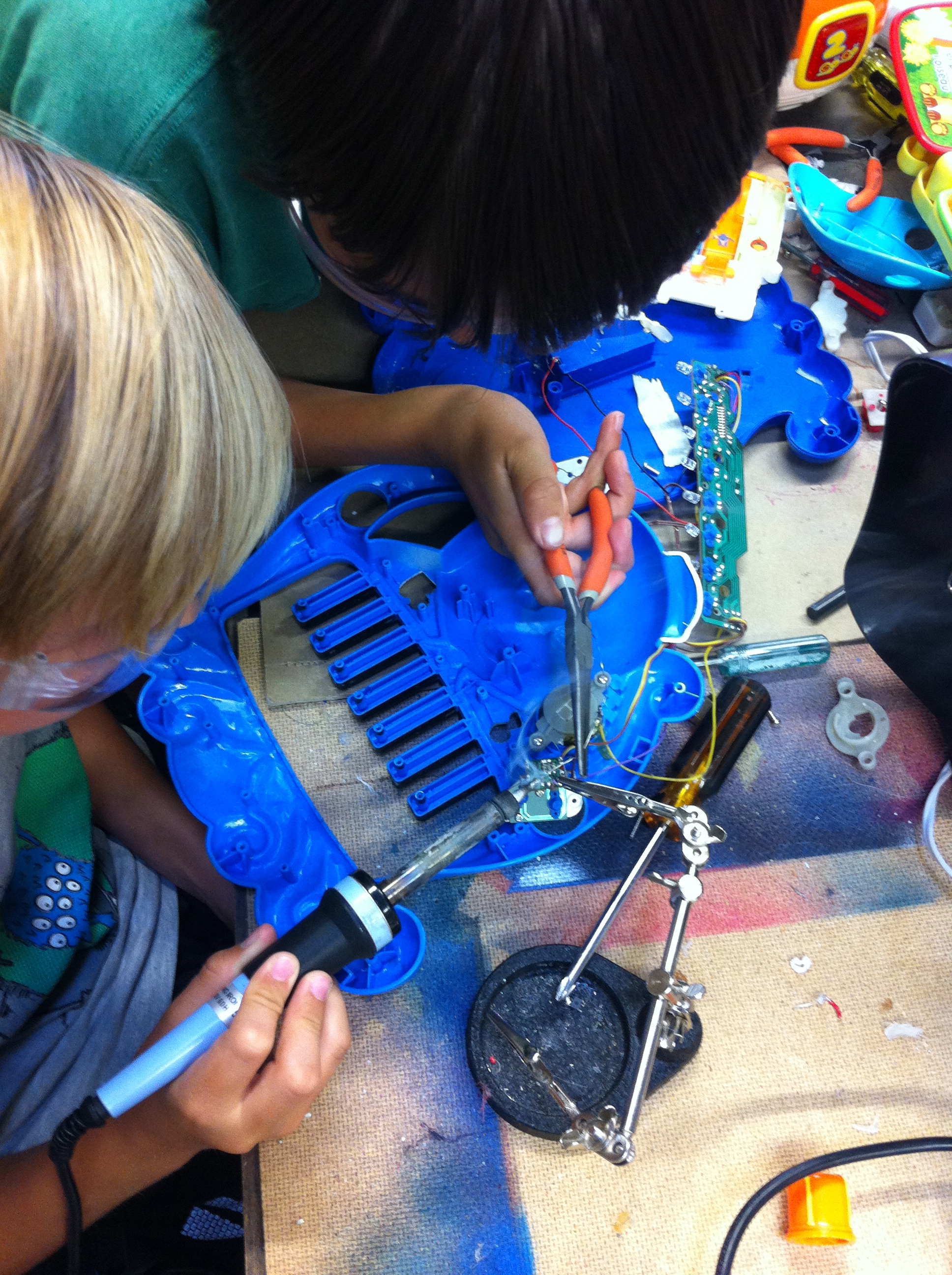
- Image Description
- This is a circuitbending activity, where electronic toys are disassembled and modified to make wacky sounds.
- Image
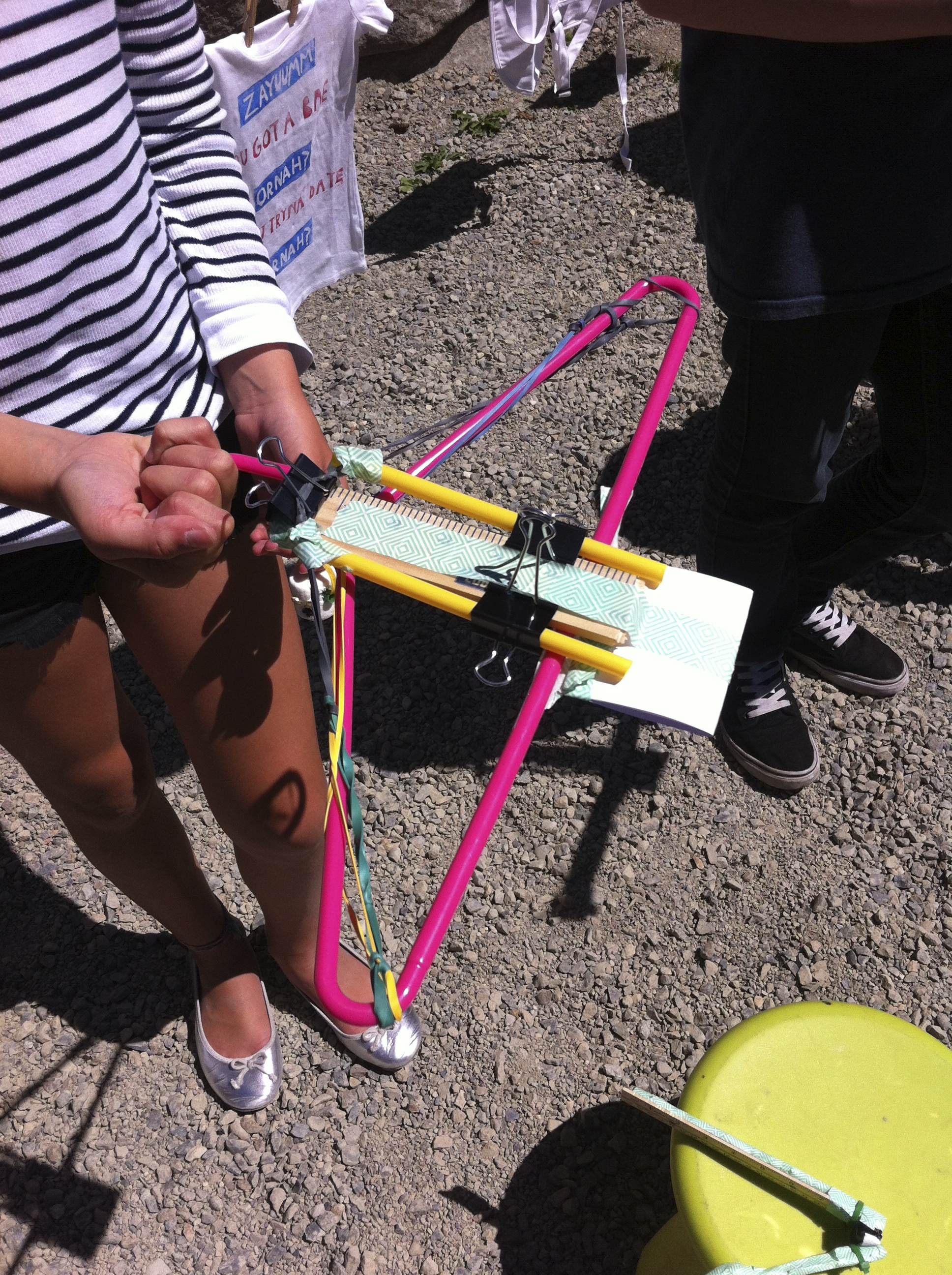
- Image Description
- This is a marshmallow launcher from my inventing class. She used a crossbow as a model.
- Image
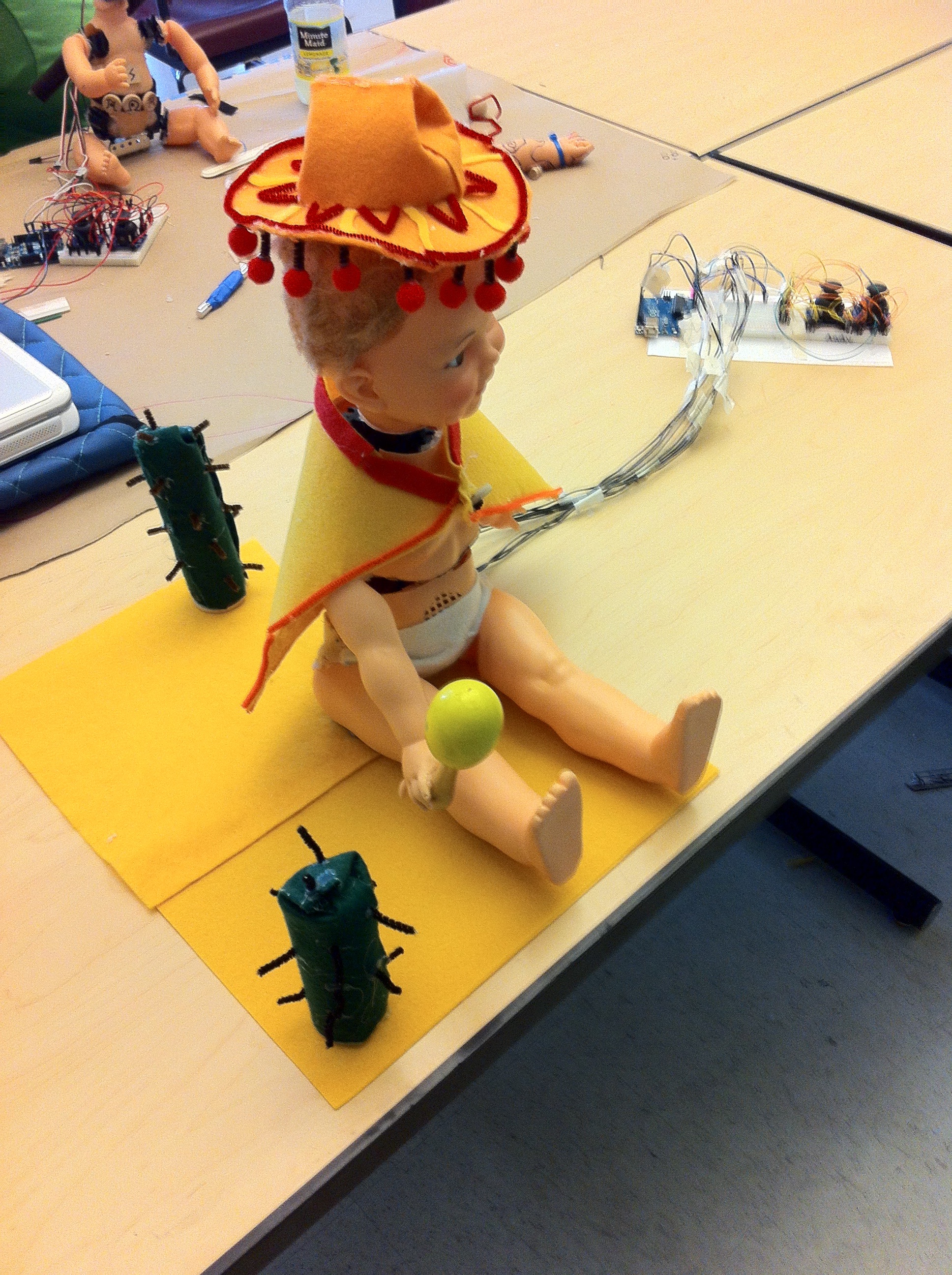
- Image Description
- This animatronic baby was created and programmed by middle school students in a two-week program at the UW. The controls on the right move the arms, waist and head.
- Image
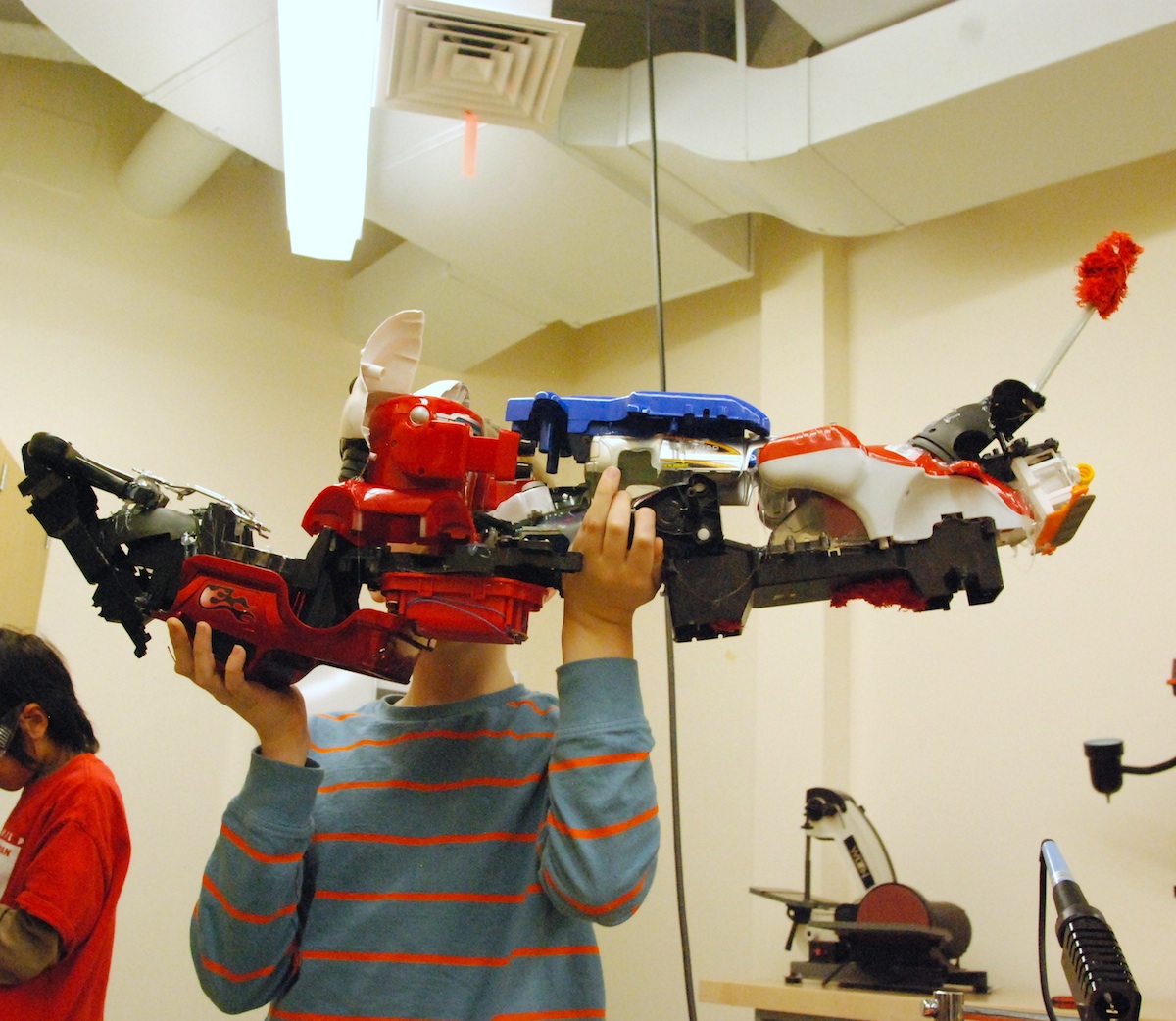
- Image Description
- The Candy Poopin' Robot was the brainchild of the South Shore Seattle Robotic Arts! students. It required several months of development.
Video
- Video Link
- vimeo.com/185772539
- Video Description
- Video Link
- Video Description
- Video Link
- Video Description